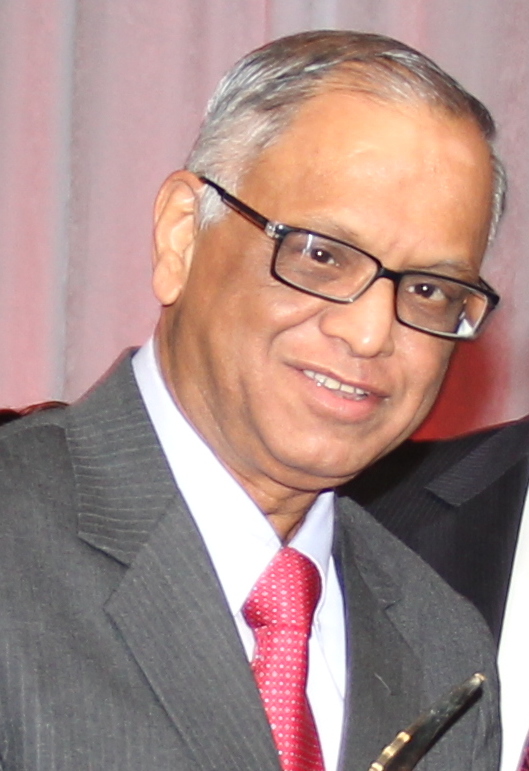Why Corporates and Families need to do better towards retention of Women in the Workforce.
We as a country have been on a mission on Beti Bachao and Beti Padhao. We have been able to control female infanticide to an extent but still as per the 2011 census, country’s average sex ratio stood at 943 and Chandigarh at the lowest at 818. Similarly, increase in the school education of girl children as well has increased. GER (female) at the higher secondary level has also shown improvement as it reached 58.2% in 2021-22 from 50.8% in 2018-19 showing a significant increase.
According to the All India Survey on Higher Education (AISHE) 2020-21 report, the Gross Enrolment Ratio (GER) in higher education in India was 27.1 per cent. The GER for male students was 29.3 per cent, and for female students, it was 24.9 per cent. There is a significant gender gap in the GER at the higher education level in India. As per the AISHE data, the GER for male students at the higher education level in India was 29.3 per cent in 2020-21, while for female students, it was 24.9 per cent. The gender gap is more pronounced in rural areas where the GER for male students was 25.8 per cent, and for female students, it was 20.7 per cent. The status of females in higher education in India based on data from the All India Survey on Higher Education (AISHE) 2020-21 report is at 50.47 per cent.
While college admission has gone above 50%, why is the participation of graduated girls in the workforce still low?
I have this unending question, If women don’t participate in the workforce, and not be in decision-making position how will there be policy-related changes to cater to the benefit of women, their health, their comfort, their well-being, to address their demands around pay parity and to be recognized for their achievements? But for this, the women will have to come out of their house and participate in the workforce.

While Dr Ambedkar promoted 4 days work a week, recently crony capitalists, N.R. Narayana Murthy said that “Young Indians should work 70 hours a week” and Sajjan Jindal also chorused saying, “ 5-day week culture is not what ‘rapidly developing nation of our size need”. It proves time and again how these crony capitalists forget that workers are human beings and people like Mr Narayana Murthy & Mr Sajjan Jindal are trying to bring in Modern-day Slavery. Until we don’t come together to raise our voices and demand for equality in pay, safe workplace, hygiene, work-life balance, these crony capitalists will neither implement labour laws, or care about environmental or human safety or well-being of human beings. For Women to fight the patriarchy at the workplace, and especially working mothers is a huge challenge.
For reforms to ameliorate the situation of the working class, they lighten the weight of the chains labour is burdened with by Capitalism, but they are not sufficient to crush capitalism and to emancipate the workers from their tyranny. – Clara Zetkin
It is a universally acknowledged truth that a parent working outside the home must have someone to take care of their child. In India, family structures have historically often filled this need, with fathers working outside the home, and mothers providing child care and elder care. However, this model is not conducive to India’s growing ambitions. If the country is to grow into a $5 trillion economy, women must be included. There are two specific ways to get here: women’s work, often care work, must be appropriately valued, and women must be adequately supported to participate in economic activity outside the home.
India’s first national Time Use Survey released in 2020 by the National Statistical Office, finds that 81.2% of all women are engaged in unpaid domestic services, compared with 26.1% of men. It finds that men spend 42 hours on average on activities within the production boundary, i.e. what is traditionally counted as economic activity, whereas women spend 19 hours. However, women spend 10 times more time on household maintenance and care for children, the sick and the elderly – 34.6 hours versus 3.6 hours. The biggest references in our lives are our Mothers, most of them are the first to wake up and are the last to sleep. just imagine if we had to bring in house help for each activity, cleaning the house, the bathrooms, vessel washing, cooking three meals and snacks or tea/coffee, washing the clothes, keeping everything organised, and caring for children and elders. All this would need 4 house helps to be employed and each would have to be paid a minimum of Rs. 20,000 total.

The 2023 Global Gender Gap report pegged the gender gap score at 68.4%. The report from the World Economic Forum underscored that at the current rate of progress, it will take over a century to close the global gender gap.In her 200-year period of study, Ms. Goldin’s research showed that women’s participation in the labour force did not necessarily move in step with economic growth. When Betty Friedan wrote in 1963 about college-educated women who were frustrated stay-at-home mothers, she noted that their problem has “no name.”
One of the patterns that emerged shows that the participation of married women decreased with the transition from an agrarian to an industrial society in the early 19th century, as economic production moved from home to factories, women were excluded from market activities., But then started to rise with the growth of the services sector in the early 20th century. It was not until offices, schools, and hospitals began to offer more jobs than factories that women found jobs. women began joining the workforce due to technological progress, the rise in education levels and the emergence of the services sector. However, even when they entered the workforce in droves, overtook men in educational attainment, did not congregate in “female jobs,” and did not drop out from the labour force to have children, with the introduction of the contraceptive pill that helped women plan careers better, But despite changes, the earnings gap between women and men is yet to close, and bridging it will require a rethink about women’s roles at home. Women continued to earn less than men.
There was a significant difference in the employment rates of married and unmarried women; while around 20% of all women worked for pay, only 5% of married women did so.
There are two implications for this: working women face the dreaded “double burden”, where working outside the home and contributing to family income does not come with a commensurate reduction in household responsibilities, and the care work that they do spend time on is not counted in the larger economic estimates, leaving us with exhausted women with lower leisure hours in a week than their male counterparts. Women’s unpaid work plays a vital role in the economy: it is responsible for 7.5% of GDP, according to an SBI report.
In other words, not only do women shoulder the burden of domestic work, but they also boost the GDP in the process. Yet in the official logs, they are not working. When uncounted, women’s work remains invisible, which has implications for labour and employment policies. For example, statistical invisibility pushes household labour “outside the realm of protective labour legislation,” which limits the work day and regulates labour conditions. Women in India work 1.5 hours longer a day than men, mostly unpaid, often in unsanitary conditions.
Professor Goldin argued that this disadvantage is due to their inability to take on jobs that involve all-consuming responsibilities. Parental responsibilities make it difficult for women to take on jobs requiring long hours and irregular work. The private equity partner who saw the deal through and stayed for late-night dinners and meetings had the chance of getting a fat bonus and promotion. These demands are incompatible with raising children, and one partner of a couple often chooses to go on a slower and safer track, the track dubbed the “mommy track,” even at the cost of a high-profile career. While women need not be the ones choosing this slow track, gender ideologies often prompt couples to assign women to take over extra family duties while men remain free to concentrate on their careers. We can see this in any Industry, from FMCG organizations, MNCs and the IT Industry, our co-worker after marriage is just a ticking time bomb for her manager who is concerned on what if she gets pregnant? The manager starts to prepare for her replacement, her promotion gets affected when she gets pregnant. Irony is Promotion as per policy is to acknowledge the work done in the past year or past duration, so actually the woman did put the effort and work throughout her pregnancy and ideally should be acknowledged or promoted whereas the injustice most of the time is inflicted by the organization wherein they give a normalized rating even if the women had performed outstanding irrespective of pregnancy. Her promotion is impacted by the Manager, HR, organisation which affects her pay and now her husband working in the same organization is getting better pay, a better role, a better designation and this leads to conversation in her house about the “Necessity of her going to earn a livelihood while her husband gets better pay”. Here is where she is pushed to resign as her work is not valued enough by her organisation and neither by her family.
Professor Goldin blamed this inequality on “greedy work” that demands extraordinary efforts from workers rewarded with high salaries, big bonuses, stock options, and fast promotions. Rising income inequality leads couples to forgo gender equity within the household and concentrate on increasing family income via specialisation. Most men in leadership positions are usually seen to casual long lunches or dinner meet-ups which many women participate with a lot of hesitation because they always want to finish work on time so that they can get back to their families and kids after their work hours as their share of responsibility still continues in form of work at home. But we can observe that men after office hours post a short break again re-connect and work at night, calling it “extending their work hours”, which is a luxury as the women are hurrying to wrap their household work, feeding the kids, getting their homework done and prepping for tomorrow. Many a time, the men in leadership positions also extend work on weekends and also call their women counterparts or team members to contribute.
In case if the women employee is unable to login after office hours, at nights or on weekends then she is termed as under-performer, or not meeting the expectation. In reality, these so called extended work hours by men in leadership positions, only reflect their inefficencies, feeds the unreal expectations enabling a toxic work environment wherein the expectations are unreal, in a world where the work share in domestic arena is not established on a fair ground.

In Kruif’s 1926 book, Microbe Hunters, she put the microscope to study gender.
Among her quiet eureka moments was a survey of firms she unearthed which had answers to questions like whether it discriminated on the basis of race, if there were jobs for which they would not hire a woman, and whether married women were not hired and single women were fired when they married. Like Professor Alfred Kahn and other mentors, she has always used economics to unravel what lies in the shadows. There is another face to this picture: supporting women working outside the home. In low-income families, single-income households are often an impossibility – both parents work simply because they have to. This means that the model of the breadwinner-caregiver begins to break down. Low-income women are working without support far more often than expected. Domestic obligations keep them from regular employment – and when they do, it is often with children in tow. At construction sites, Harvard researchers in 2013 described children playing in the shadow of dangerous equipment and high pollution. It endangers their lives and health at the most crucial age for brain development, i.e. under three years. All subsequent efforts and public funds directed towards education, health and skilling are then built on a weak base.
The government already runs the world’s largest public system for child services, the remarkable Anganwadi system, which reaches 80 million children of up to six years of age through 1.4 million centres. These centres function best in a rural setting, where community members participate together. However, since they are only open from 9 a.m. to 1 p.m., women still need additional care options, if they are to work a full eight-hour day. A fast urbanising India needs different models to support its women. Creches offer one solution: as of 2020, the National Creche Scheme operates nearly 6,500 crèches across the country. Creches help mothers build stable careers, as well as give children – who would otherwise be exposed at work – a safe, nurturing environment. The private sector recognises this need, and provides services for high-income families: the childcare/preschool ecosystem is an estimated 731,256 crore industry, expected to grow at 11.2% CAGR till 2028. There is an imperative, therefore, for the public sector to ramp up its already considerable efforts, to counteract the base inequality of income and provide high-quality child services to all.
Today, the women’s labour force participation rate (FLFPR) in India is 32.8% according to government sources and 24% according to the World Bank, compared to China’s 61%, Bangladesh’s 38%, Nepal’s 29% and Pakistan’s 25%. If India wants to raise its FLPR to empower its women, myths around women’s work must be dispelled, and women’s work must both be counted appropriately and supported fairly.
Stanford economist John Pencavel has shown that longer working hours do not mean more productivity and, in some jobs, lead to increased mistakes and injuries.
CONCLUSION
Towards reshaping the environment while increased male participation in household work and childcare would help, we must also find ways of reshaping both the work and social environment so that they are conducive to developing a work-life balance for both men and women. This means having work structures that are respectful of workers’ time and do not emphasise very long work hours. This makes both social and economic sense. But if we need to rein in the greedy workplace, we also need to rein in a variety of institutions that demand more and more of our time. This includes schools that rely on parents to supervise homework and urban developments that place homes far from workplaces. Until we can create these supportive institutions, it will be hard to write the last chapter for the grand gender convergence in labour market outcomes that Claudia Goldin advocates for so fiercely. She also adds that solution to this dilemma is restructuring a workplace that does not rely on heroic efforts, has moderate work hours, and predictable schedules.
I strongly believe that we should change the way they value Human Labour because Equality has progressed Slowly.
References:
Understanding the Gender Gap by Claudia Goldin research – 1990
Microbe Hunters by Kruif
The Overworked American, Juliet Schor
Sex Ratio Report, Press Information Bureau, Government of India, Ministry of Health and Family Welfare, 2013.
Report on Unified District Information System for Education Plus (UDISE+) – 2021-22, by the Department of School Education and Literacy, Ministry of Education.
All India Survey on Higher Education (AISHE) 2020-21
Time Use Survey GOI, Ministry of Statistics and Programme Implementation– 2020
ECOWRAP, SBI report- 2023.
Global Gender Gap Report, World Economic Forum- 2023
About the author
Kavitha Pandian

Kavitha Pandian is working in an IT company in the USA as a practice manager. She runs many initiatives including the Save Tamilnadu Farmer, Our Village Our Responsibility, and Adopt a Village and extends financial support and scholarship to underprivileged children for education, and betterment of rural life and has supported the people of Tamil Nadu during major natural disasters including Gaja and Covid. She has received many awards including ‘The Women Achievers Award’ by FeTNA, USA, in 2022. She also was felicitated by the District Collector, Virudhunagar during the 75th Independence Day celebrations, 2022, for her work towards infrastructure.



